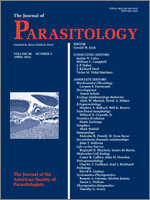Many species of pocket gophers and their ectoparasitic chewing lice have broadly congruent phylogenies, indicating a history of frequent codivergence. For a variety of reasons, phylogenies of codiverging hosts and parasites are expected to be less congruent for more recently diverged taxa. This study is the first of its scale in the pocket gopher and chewing louse system, with its focus entirely on comparisons among populations within a single species of host and 3 chewing louse species in the Geomydoecus bulleri species complex. We examined mitochondrial DNA from a total of 46 specimens of Geomydoecus lice collected from 11 populations of the pocket gopher host, Pappogeomys bulleri. We also examined nuclear DNA from a subset of these chewing lice. Louse phylogenies were compared with a published pocket gopher phylogeny. Contrary to expectations, we observed a statistically significant degree of parallel cladogenesis in these closely related hosts and their parasites. We also observed a higher rate of evolution in chewing louse lineages than in their corresponding pocket gopher hosts. In addition, we found that 1 louse species (Geomydoecus burti) may not be a valid species, that subspecies within G. bulleri are not reciprocally monophyletic, and that morphological and genetic evidence support recognition of a new species of louse, Geomydoecus pricei.
How to translate text using browser tools
1 April 2012
Cophylogeny on a Fine Scale: Geomydoecus Chewing Lice and Their Pocket Gopher Hosts, Pappogeomys bulleri
James W. Demastes,
Theresa A. Spradling,
Mark S. Hafner,
Gretchen R. Spies,
David J. Hafner,
Jessica E. Light
ACCESS THE FULL ARTICLE

Journal of Parasitology
Vol. 98 • No. 2
April 2012
Vol. 98 • No. 2
April 2012




